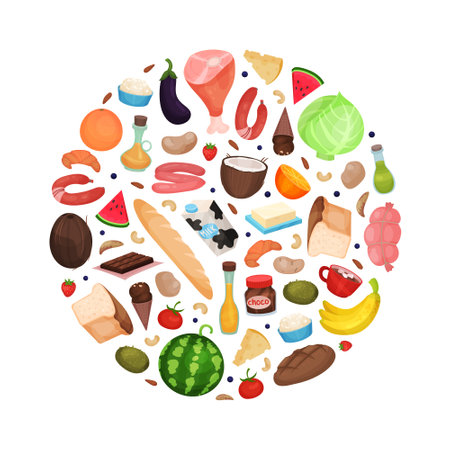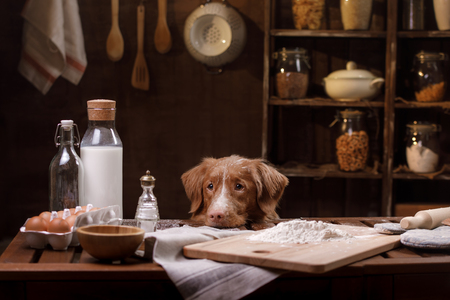Introduction to Raw Diet and Kibble
When it comes to feeding our pets, two of the most popular choices are raw diets and kibble. Each option has its own set of benefits and drawbacks, and pet owners choose based on their lifestyle, budget, and beliefs about pet nutrition. Understanding these feeding methods can help you make the best decision for your furry friend.
What Is a Raw Diet?
A raw diet consists of uncooked meats, bones, organs, and sometimes fruits and vegetables. The idea behind raw feeding is to mimic what animals would eat in the wild, providing them with a biologically appropriate diet.
Why Do Pet Owners Choose Raw Feeding?
- Belief that raw food is more natural and species-appropriate
- Potential improvements in coat health, energy levels, and digestion
- Avoidance of artificial additives and preservatives found in commercial kibble
What Is Kibble?
Kibble is dry pet food made from processed ingredients, including meat meals, grains, vegetables, and added vitamins. It is designed to be convenient, shelf-stable, and nutritionally balanced.
Why Do Pet Owners Choose Kibble?
- Convenience – easy to store, measure, and serve
- Cost-effective compared to fresh or raw diets
- Formulated to meet nutritional standards with added vitamins and minerals
Main Differences Between Raw Diets and Kibble
| Feature | Raw Diet | Kibble |
|---|---|---|
| Nutritional Approach | Mimics a natural diet with fresh ingredients | Processed food with balanced nutrients |
| Shelf Life | Spoils quickly; requires refrigeration or freezing | Long shelf life; easy storage |
| Preparation Time | Takes time to prepare properly | No preparation needed; ready to serve |
| Cost | Tends to be more expensive due to fresh ingredients | A budget-friendly option for many pet owners |
| Nutrient Control | Total control over ingredient quality | Nutrients are pre-balanced by manufacturers |
| Bacteria Risk | Presents risks if not handled correctly (e.g., salmonella) | Lesser risk as its cooked at high temperatures |
2. Nutritional Differences
When choosing between raw diets and kibble, one of the most important factors to consider is nutrition. Both feeding methods provide essential nutrients, but they differ in protein quality, digestibility, and overall nutrient content.
Protein Quality
Protein is a crucial component of a dogs diet, supporting muscle growth, energy levels, and overall health. Raw diets typically contain high-quality animal proteins that are less processed, making them more bioavailable for your pet. Kibble also provides protein, but it often comes from a mix of meat meals and plant-based sources, which may not be as easily absorbed.
| Aspect | Raw Diet | Kibble |
|---|---|---|
| Protein Source | Whole meats (chicken, beef, fish) | Meat meals, plant proteins |
| Processing Level | Minimal processing | Highly processed |
| Bioavailability | High | Varies depending on ingredients |
Essential Nutrients
A balanced diet should include vitamins, minerals, and fatty acids essential for your dog’s health. Raw diets often require careful planning to ensure all necessary nutrients are included. Without proper supplementation or variety, some dogs may lack key vitamins such as calcium or phosphorus. On the other hand, kibble is formulated to meet AAFCO (Association of American Feed Control Officials) standards, ensuring that each serving contains the required nutrients.
Nutrient Balance in Raw vs. Kibble
- Raw Diet: Needs careful supplementation to avoid deficiencies.
- Kibble: Pre-formulated to meet nutritional requirements.
Digestibility and Absorption
The digestibility of food affects how well your dog can absorb nutrients. Since raw food is minimally processed and closer to a natural canine diet, many dogs experience better digestion and smaller stools due to higher nutrient absorption. Kibble contains carbohydrates and fillers that can be harder for some dogs to digest, leading to larger stools and potential sensitivities.
Main Differences in Digestibility:
- Raw Diet: Easier to digest for many dogs; results in smaller stools.
- Kibble: Contains fillers that may be harder to break down.
Nutritionally, both raw diets and kibble have their pros and cons. While raw diets offer high-quality protein and better digestibility, they require careful planning to ensure balanced nutrition. Kibble provides convenience and complete nutrient profiles but may contain lower-quality protein sources and fillers.

3. Health Benefits and Risks
When choosing between raw diet and kibble for your pet, understanding the potential health benefits and risks is essential. Both feeding methods have their advantages and drawbacks, particularly when it comes to digestive health, allergies, and dental care.
Digestive Health
A raw diet is often praised for being more natural and easier to digest for some pets, as it lacks artificial additives and fillers. Many pet owners report improved stool quality, fewer gastrointestinal issues, and better nutrient absorption. However, raw food can also introduce harmful bacteria like Salmonella or E. coli if not handled properly.
On the other hand, kibble is designed to be nutritionally balanced but may contain processed ingredients that some pets find harder to digest. Some lower-quality kibbles include fillers that can lead to bloating or digestive upset in sensitive animals.
Allergies and Food Sensitivities
Food allergies are a common concern among pet owners. A raw diet allows more control over ingredients, making it easier to eliminate potential allergens such as grains or artificial preservatives. Many pets with food sensitivities experience fewer allergic reactions on a raw diet.
Kibble, especially grain-free or limited-ingredient formulas, can also cater to pets with allergies. However, some commercial kibbles contain additives or low-quality protein sources that might trigger allergic responses.
Dental Care
A significant benefit of a raw diet is its impact on dental health. Chewing raw bones and meat naturally helps clean teeth by reducing plaque and tartar buildup. This can lead to healthier gums and fresher breath.
Kibble’s texture can provide some dental benefits by scraping plaque off teeth while chewing. However, not all kibble is effective in maintaining oral hygiene, and some pets may still require additional dental care, such as brushing or professional cleanings.
Health Comparison Table
| Aspect | Raw Diet | Kibble |
|---|---|---|
| Digestive Health | Easier digestion for some pets; risk of bacterial contamination | Nutritionally balanced; may contain fillers that cause digestive issues |
| Allergies & Sensitivities | Easier to control ingredients; fewer allergens | Special formulas available; some additives may trigger reactions |
| Dental Care | Cleans teeth naturally through chewing bones and raw meat | May help reduce plaque but less effective than raw bones |
4. Convenience and Cost Factors
When deciding between raw feeding and kibble, its important to consider how each option fits into your lifestyle. Factors like preparation time, storage requirements, cost, and availability can make a big difference in daily feeding routines.
Preparation Time
Kibble is undoubtedly the most convenient option when it comes to feeding time. You simply scoop the appropriate amount into your dogs bowl, and mealtime is ready in seconds. Raw diets, on the other hand, require more effort. Depending on how you source the ingredients, you may need to portion, thaw, and prepare meals ahead of time.
Storage Requirements
Storage needs vary significantly between raw food and kibble. Kibble can be stored in a dry, airtight container at room temperature for extended periods. In contrast, raw food must be kept frozen or refrigerated to prevent spoilage, requiring more freezer space.
Cost Comparison
The cost of feeding raw versus kibble depends on factors like the quality of ingredients and portion sizes. Generally, high-quality raw diets tend to be more expensive than standard kibble due to the cost of fresh meat and supplements. However, premium kibble brands can also be costly. Below is a basic comparison:
| Factor | Raw Diet | Kibble |
|---|---|---|
| Average Monthly Cost | $100 – $300 (varies by size & ingredients) | $30 – $100 (depends on brand) |
| Storage Needs | Requires freezer/refrigerator space | Easily stored in a dry container |
| Preparation Time | Takes time to portion & thaw | No prep needed; ready to serve |
| Availability | May need specialty pet stores or online orders | Easily found in grocery & pet stores |
Availability
Kibble is widely available at grocery stores, pet stores, and even online retailers with auto-ship options for convenience. Raw food can sometimes be harder to find and may require purchasing from specialty pet stores, but many online services now offer home delivery options.
Which Option Fits Your Lifestyle?
If convenience and lower costs are your priority, kibble might be the better choice. However, if youre willing to invest more time and money into meal prep for potential health benefits, a raw diet could be worth considering.
5. Safety and Contamination Concerns
Bacterial Risks in Raw Diets
One of the biggest concerns with raw feeding is the risk of bacterial contamination. Raw meat can carry harmful pathogens like Salmonella, E. coli, and Listeria. While dogs have a more acidic stomach than humans, which helps kill some bacteria, there is still a risk of infection—both for pets and their owners.
Handling raw food requires strict hygiene practices, such as:
- Washing hands and surfaces thoroughly after handling raw meat.
- Storing raw food separately from human food to avoid cross-contamination.
- Feeding in designated areas that are cleaned regularly.
Additionally, some veterinarians express concerns about unbalanced homemade raw diets, which may lack essential nutrients if not properly formulated.
Preservatives and Additives in Kibble
Kibble, on the other hand, goes through high-temperature processing that kills bacteria, making it generally safer from contamination risks. However, commercial kibble often contains preservatives and additives to extend shelf life and maintain texture.
Some common additives found in kibble include:
| Additive | Purpose | Potential Concern |
|---|---|---|
| BHA/BHT | Preservative | Possible carcinogenic effects in high doses |
| Ethoxyquin | Preservative | Linked to liver and kidney issues in large amounts |
| Artificial Colors | Enhances appearance | No nutritional benefit; potential allergens |
| Propylene Glycol | Moisture retention | Toxic to cats; controversial for dogs |
Which Option Is Safer?
The safety of both raw diets and kibble depends on proper handling and quality control. If choosing raw, its crucial to source high-quality meat and practice safe food handling. For kibble, opting for brands with natural preservatives and minimal artificial additives can reduce health risks.
6. Making the Best Choice for Your Pet
Choosing between a raw diet and kibble depends on several factors, including your pet’s health, lifestyle, and your personal circumstances. There is no one-size-fits-all approach, so it’s essential to evaluate what works best for both you and your furry friend.
Consider Your Pet’s Health
Every pet has unique dietary needs. Some pets thrive on a raw diet, while others may do better with kibble. Consider the following health factors:
| Health Condition | Best Feeding Option |
|---|---|
| Food Allergies or Sensitivities | Raw diets may help eliminate allergens found in processed kibble. |
| Digestive Issues | Kibble with added fiber can support digestion, while raw diets may improve gut health. |
| Weight Management | A carefully portioned raw diet can help maintain a healthy weight. |
| Dental Health | Raw bones can naturally clean teeth, but some kibble formulas are designed for dental care. |
Your Lifestyle and Convenience
Your daily routine plays a significant role in deciding which feeding method suits you best. Ask yourself these questions:
- Do you have time to prepare meals? Raw diets require meal prep and careful handling to avoid contamination.
- Do you travel frequently? Kibble is easier to store and transport compared to raw food.
- Are you comfortable handling raw meat? If not, kibble might be the better option.
- What’s your budget? High-quality raw diets can be more expensive than premium kibble.
Your Budget and Long-Term Costs
The cost of feeding your pet varies depending on the type of food you choose. Below is a general comparison:
| Factor | Kibble | Raw Diet |
|---|---|---|
| Upfront Cost | $-$$ (Varies by brand) | $$$ (Higher initial investment) |
| Storage Needs | Shelf-stable, easy to store | Requires freezer/refrigerator space |
| Veterinary Costs | Poor-quality kibble may lead to long-term health issues | A well-balanced raw diet may reduce vet visits |
Your Pet’s Preference
No matter how nutritious a diet is, if your pet refuses to eat it, it won’t work. Some pets prefer the taste and texture of raw food, while others enjoy the crunch of kibble. It may take some trial and error to find what they like best.
The Bottom Line: Balance is Key
If youre unsure which option to choose, consider a hybrid approach—feeding both raw and kibble in a way that meets your pet’s nutritional needs. Always consult with a veterinarian before making significant changes to your pets diet to ensure their health and well-being.


